Figures & data
(A) Rectangular bales: nine-core pattern; (B) Rectangular bales: 14-core pattern; (C) Round bales: 12-core pattern.
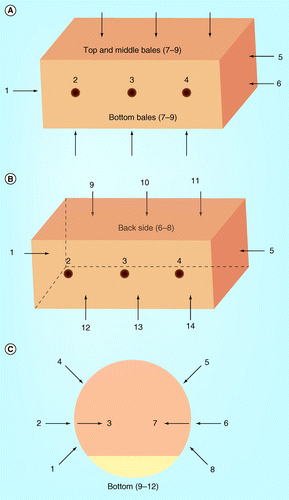
Spatial dependence of individual moisture concentrations at specific locations was interpolated to estimate moisture concentrations along multiple paths.
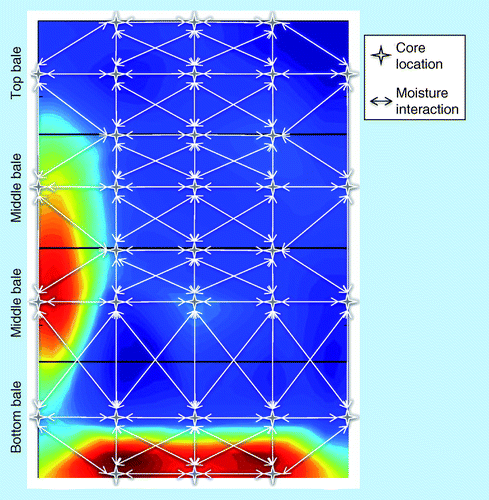
(A) Tarped corn stover and (B) open corn stover. Both average 22.2.% wet basis. Moisture content is indicated by the bar under the maps and ranges from approximately 5 to 65%. Scale is shown in feet as the sample locations were based on intervals of the same unit.
Histograms show moisture distributions as calculated by interpolation.
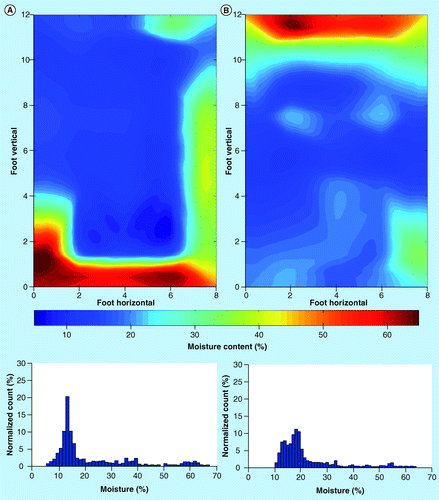
(A) Tarped corn stover under wet conditions, average 23.2% wet basis; and (B) tarped corn stover under dry conditions, average 16.5% wet basis. Relative moisture content is indicated by the bar under the maps and ranges from approximately 10 to 60%.
Histograms show moisture distributions as calculated by interpolation.
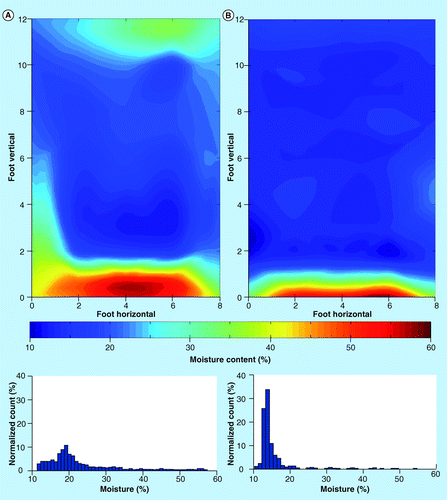
Wrapped low moisture sorghum bales after (A) 3 months of storage, average 19.1% wet basis; (B) 9 months of storage, average 23.1% wet basis; and (C) 12 months of storage, average 22.4% wet basis.
Relative moisture content is indicated by the bar under the maps and ranges from approximately 10 to 60%.
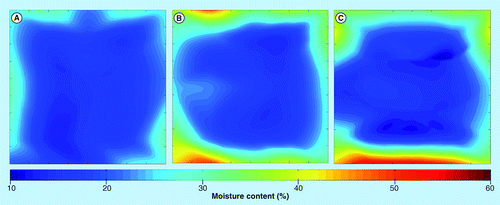
(A) 35.5% wet basis; (B) 41% wet basis; and (C) 51.2% wet basis. Relative moisture content is indicated by the bar over the maps and ranges from approximately 25 to 75%.
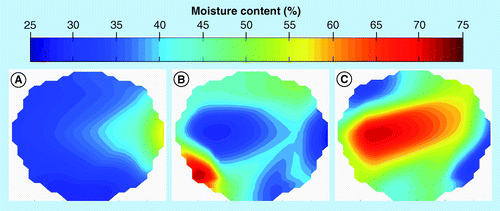
Table 1. Bale and stack conditions showing initial moisture contents for the feedstock at different storage locations.
Table 2. Moisture contents for stored feedstock and their changes over time.
Table 3. Dry matter loss for stored feedstock over time.